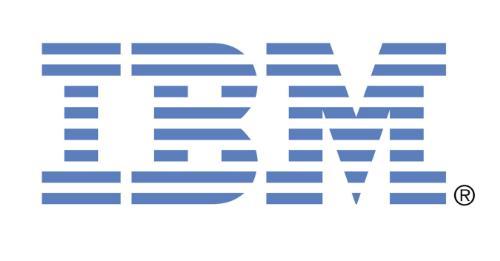aperture.systems
Here's How Much a $1000 Investment in Pure Storage Made 10 Years Ago Would Be Worth Today
For most investors, how much a stock's price changes over time is important. This factor can impact your investment portfolio as well as help you compare investment results across sectors and ...

IBM Sees Software Defined Storage as Tipping Point in Taming Big Data Deluge
In a keynote speech at the recent IBM Enterprise, Jamie Thomas, General Manager, Storage and Software Defined Systems at IBM, unveiled a bold strategy for the company’s storage business. Building upon ...

FatPipe, Jackpot Digital, and NDT Pharmaceuticals Interviews to Air on the RedChip Small Stocks, Big Money(TM) Show on Bloomberg TV
ORLANDO, FLORIDA / ACCESS Newswire / November 7, 2025 / RedChip Companies will air interviews with FatPipe, Inc. (NASDAQ:FATN), Jackpot Digital Inc. (OTCQB:JPOTF), and NDT Pharmaceuticals Inc.

Buyer’s guide to AI networking technology
This article compares the specialized platforms from Nvidia, Cisco, Arista, and HPE Juniper and takes deep dive on the 2025 data center market.

Data Center Storage Business Analysis Report 2025: Market to Expand by Over $200 Billion to Reach $354 Billion by 2030, Driven by the Hyper-Converged Infrastructure and ...
Key opportunities in the Data Center Storage market include the growing demand for scalable and efficient storage solutions driven by digital transformation, cloud adoption, and IoT. Emphasis is on software-defined storage, NVMe, and hyper-converged infrastructure. Growing markets include the US, China, and segments like SAN and NAS. Data Center Storage Market Data Center Storage Market Dublin, Nov. 10, 2025 (GLOBE NEWSWIRE) -- The "Data Center Storage - Global Strategic Business Report" report
Show HN: I left my FAANG job at 50 to build a sci-fi game
I am a 50-year-old who left a FAANG Engineering Manager job to build a sci-fi game. I just released Outsider, a sci-fi narrative game with multiple endings. If you want to support my work, the game is now 15% off (https://store.steampowered.com/app/3040110/).I've always wanted to create a game. I moved from Brazil to the US to work at Big Tech, but after a career of customer focus, mission alignment and 360-degree feedback, I wanted to experience solo game developm

FatPipe Reports Second Quarter Fiscal Year 2026 Results
Monthly Recurring Billings Grew 49% Sales Headcount Nearly Tripled From the Second Quarter of Fiscal 2025 to Second Quarter ...

Global Software-Defined Storage (SDS) Market Overview 2025-2030: Platforms, Applications and the Competitive Landscape
Key opportunities lie in supporting Kubernetes orchestration, object-based storage for unstructured data, cloud-native models, and in sectors like retail and healthcare needing robust, scalable solutions. Emerging regions, SMEs, and data backup services present strong growth potential within a cloud-dominated landscape. Software-Defined Storage (SDS) Platforms and Applications Market Software-Defined Storage (SDS) Platforms and Applications Market Dublin, Nov. 07, 2025 (GLOBE NEWSWIRE) -- The "S
Why the BGP protocol remains one of the biggest risks online
The Border Gateway Protocol (BGP) is often called the Internet’s most broken protocol - and for good reason. In this video, ...
iONLINE delivers real-time connectivity control with its new global network core
ONLINE’s software-defined mobile core infrastructure brings programmable connectivity and edge capabilities for agility at ...
FalconStor Software: Q3 Earnings Snapshot
AUSTIN, Texas (AP) — AUSTIN, Texas (AP) — FalconStor Software Inc. (FALC) on Wednesday reported net income of $30,000 in its third quarter. The Austin, Texas-based company said it had net loss of 7 ...
EG4 partners with Molecule Systems for energy management software integration
EG4 Electronics announced a strategic partnership with Molecule Systems, a Houston-based energy software company specializing ...

Dell Targets Rivals Pure Storage And Vast Data As AI Race Heats Up
Both Pure Storage and Vast Data have fired back at Dell’s claims that its latest storage configurations use up to 72 percent less power and 80 percent less rack space to run the same Nvidia infrastructure.

Why the future of the datacenter is the infrastructure operating system
Beyond simplicity, a unified architecture improves performance. By reducing the number of "north-south" and "east-west" communications between modules, an Infrastructure OS reduces CPU and memory ...
Self-Healing Network Infrastructure Using AI-Based Intent Recognition
AI, intent-based networking and automation will set the foundation for next-generation fully autonomous networks.
ZeroTier Launches New Central Release, Unveils Redesigned UI/UX to Empower Users With Faster, More Intuitive Network Control
With the new release also comes the introduction of ZeroTier's updated visual identity, reflecting the continued evolution as a platform focused on clarity, accessibility, and ease of use. The ...

Zacks Industry Outlook Highlights Pure Storage, NetApp and Netlist
Escalating trade tensions, especially with China, and their impact on global supply chains, along with global macroeconomic turbulence and associated inflation, remain headwinds for the Zacks Computer ...

Container storage: Five key things you need to know
We look at container storage and backup, diving deep into how storage works in containers, container storage interface, container-native storage, and the management platforms storage suppliers offer

How MPSTOR Delivers Software Defined Storage Across Multiple Services
Most traditional storage providers integrate their solution with compute. MPSTOR takes a different approach by integrating virtualization into the software stack to provide better, more robust ...

Software Defined Storage for Dummies
Software defined storage is a relatively new concept in the computing and storage industry and can refer to many different technologies and implementations. It is part of a larger industry trend that ...











